Support for Art by Northwest is provided by Visit Bellingham Whatcom County.
When artist Jennifer Angaiak Wood was teaching high school English in Alaska, she often led Shakespeare classes and was struck by the playwright’s use of masks — both literal and figurative.
“All of these themes show up about wearing a mask, and is that worth giving up your true self, and the lengths that people will go to be someone that doesn’t even make them happy,” she says. “And when they can step away from that, they find the joy and the comfort in their lives.”
Now based in Indianola, Wash., where she devotes her time to art-making and parenting, Wood is exploring masks in a material way: carving them in the tradition of her Yup’ik heritage.
“The thing that fascinates me so much about masks is how you can capture the whole human experience,” she says. “You move an eye, or you adjust the mouth, and it goes from a smirk to a smile or the other way around.”
Wood’s carved masks express joy and confusion, surprise and struggle, love and loss and even, as she puts it in one piece, “the feeling when you really want to laugh at something but you can’t.” By combining traditional Yupi’k mask materials like driftwood, feathers and sinew with beads, glass, wire and found objects, she creates contemporary takes on Yup’ik stories.
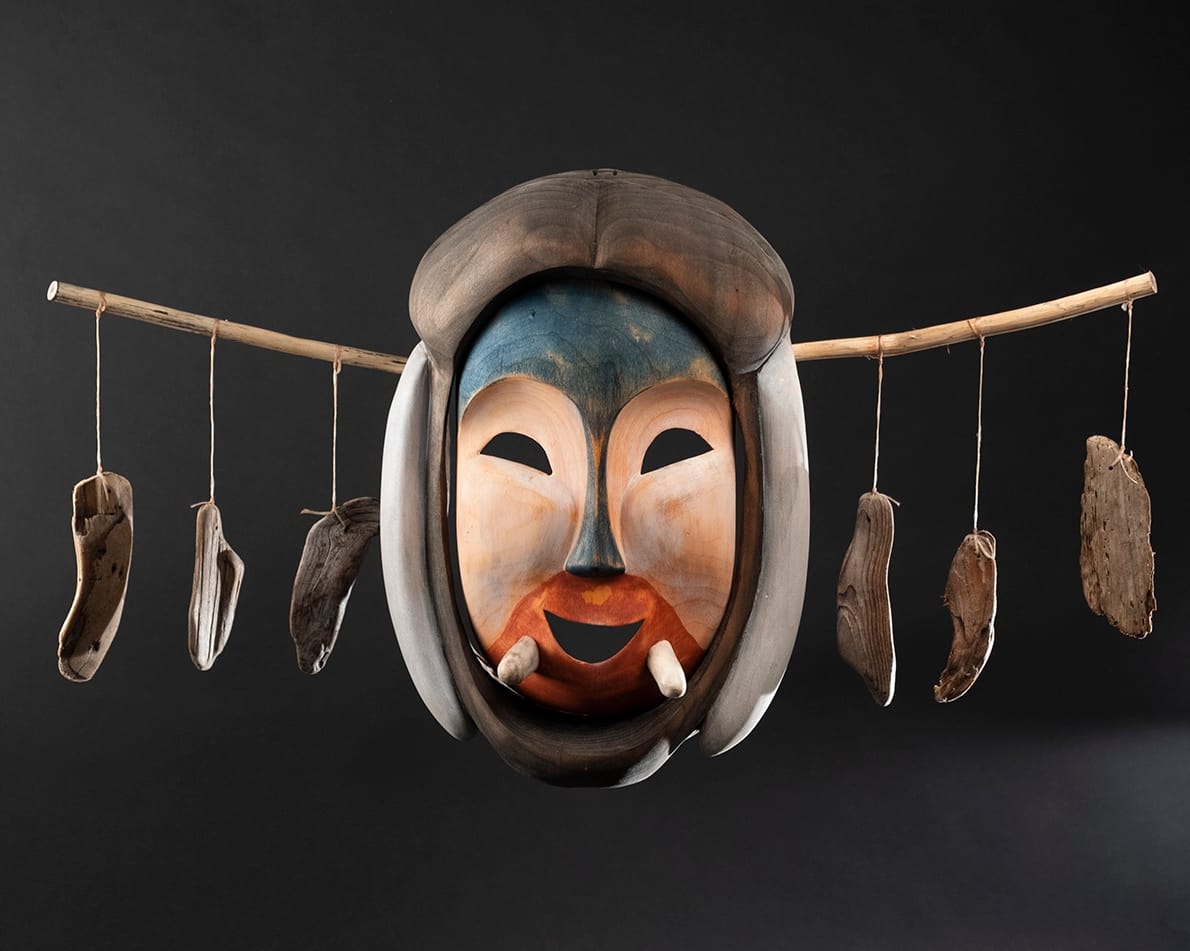
Born and raised in Fairbanks, Wood has fond memories of spending summers with her Yup’ik grandparents in Tununak, on the coast of the Bering Sea. Her grandmother was an accomplished weaver of grass baskets, which Wood remembers eagerly pulling open to take a deep whiff of the earthy scent. “They’re so amazing,” she says, marveling at the tightness of the weave. “When you hold it up, you only see the tiniest little pinpricks of light.”
Her grandfather was a natural storyteller, sharing Yup’ik family lore and legends. “My ap’a only spoke Yup’ik and I only spoke English,” Wood explains with a laugh. While the specifics might not always be certain, she knows that there were at least three shamans in the past four or five generations of her family. “And since shamans were carvers,” she says, “it’s likely that they were carvers too.”
Perhaps that legacy explains why in high school, when Wood was offered the chance to take a Native art class, she picked up carving immediately despite having no prior experience. “My teacher, Ron Manook, started the Alaska Native arts program in the Fairbanks school district. He walked us through the process … and I just grabbed a piece of wood and started designing,” she recalls. “I really took to it right away, like I even had the right curves around the forehead.”
Noting her interest and talent, Wood’s parents bought their teenage daughter a canvas-wrapped set of traditional carving chisels. It’s a set she cherishes and still relies on today; the handles have taken on the shape of her grip over the decades.
Since moving to the Seattle area in 2015, Wood has met Native artists from the region who use different carving tools based in their own heritage. “Coast Salish, Tlingit, Haida, Tsimshian people … have helped me learn how to use their traditional bent knives,” she says. Now she incorporates a wider range of Indigenous tools and traditions when creating her expressive masks.
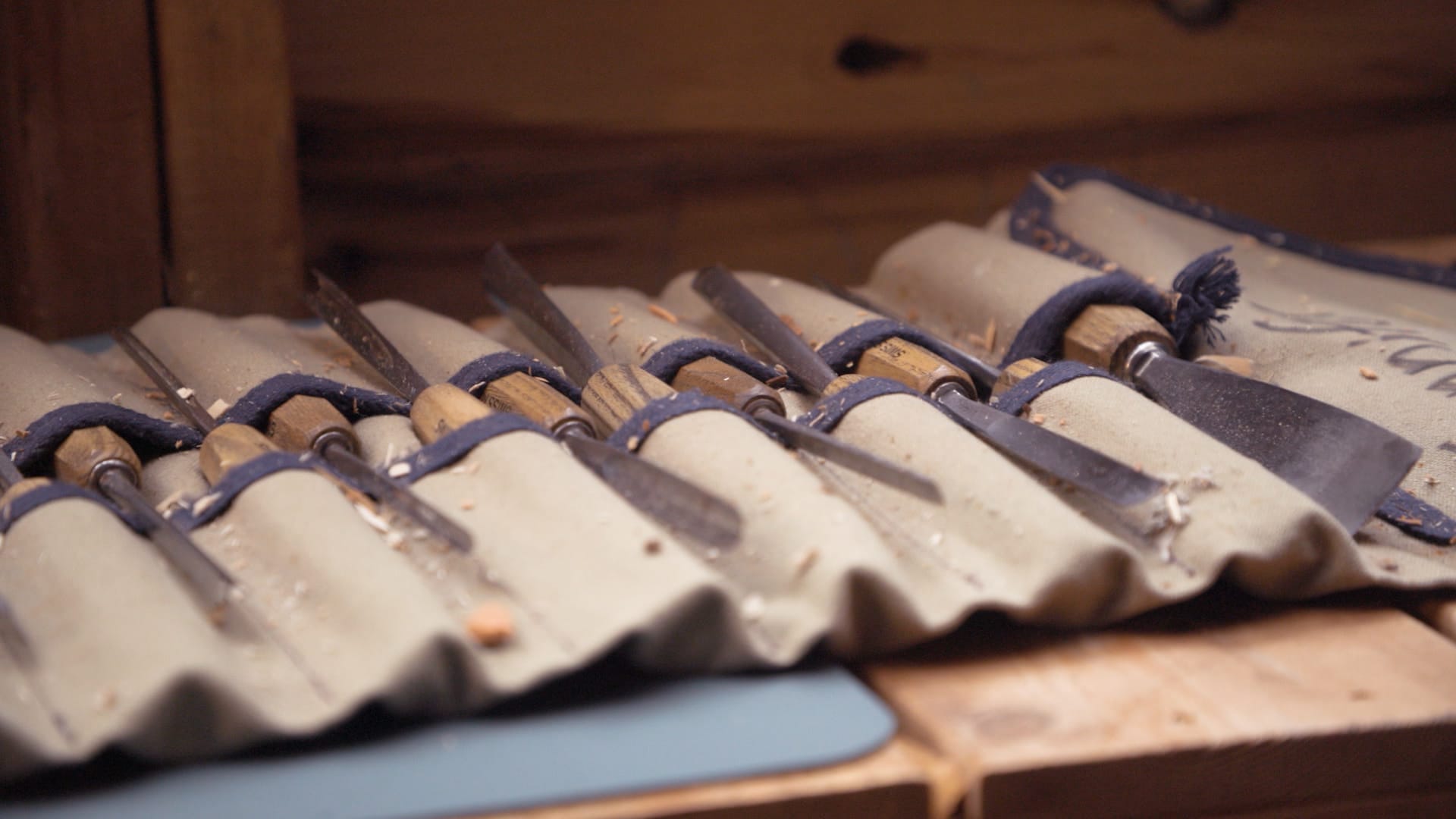
Wood prefers to use windfall trees as the basis for her masks, splitting logs with an axe in her driveway to see what emerges. She lets the natural shape and bend of the grain guide her designs — another Yup’ik tradition that means most masks are asymmetrical (unlike the bilateral symmetry seen in Formline design from the Northwest Coast).
“Wood is a living art material,” says the aptly named artist. “I always feel like it’s telling me what it wants — what styles, what designs it is wanting to become.”
Without many trees in coastal Tununak, her ancestors relied almost exclusively on driftwood for mask material. Wood scours the nearby beach in hopes of finding a piece that’s just right — in size, shape and carveability — to serve as a central face. She also incorporates smaller bits of driftwood into adornments for her cedar-based pieces.
In a raw cedar-scented studio at the edge of her yard, Wood begins each mask with a story in mind. This could be a traditional tale, like the story of a blind boy whose sight is returned by two loons; or a piece about the mighty power of rivers; or an image that conveys the messy nature of personal growth. Often, the Yup’ik emphasis on a deep human/animal connection is conveyed through faces emerging from inside fish bellies, ravens or a walrus’s mouth.
Whatever the image, Wood uses her whole body to carve — her torso and legs bracing as her arms push into each cut and the soft wood peels like butter. Watching a face slowly emerge from the wood is like seeing the moon suddenly appear from behind thick clouds: surprising yet familiar.
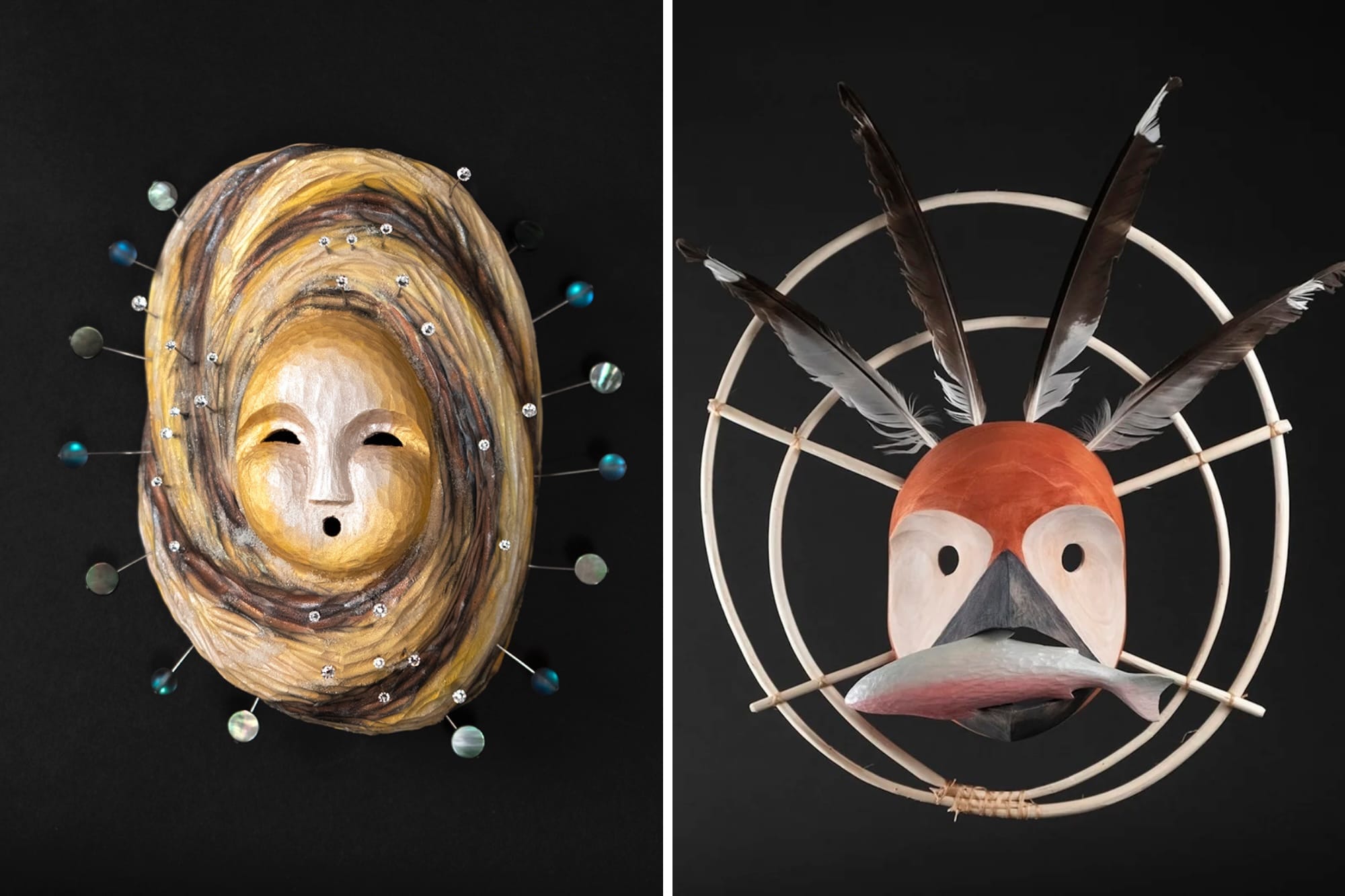
Look at several of Wood’s masks and you’ll notice a pattern: actual or implied rings suspended around the central face. Called “universe rings,” these are common to Central Yup’ik masks and are rooted in a foundational belief system.
“What I have been told is all old masks had rings around them,” Wood explains. “They represent our place in the universe and how we are connected to everything.” The concentric circles evoke the concept — and visuals — of a ripple effect. “We can’t do things and not expect other parts of life to be affected,” Wood continues. “It’s this idea of reciprocity — that we take care of the world around us if we expect it to take care of us.”
Sometimes constructed with bentwood, willow or feathers, the rings can also indicate the spiritual world surrounding the physical one. In her own masks, Wood has created rings from wire, willow, stained glass, hand-tanned salmon skin, small wooden clothes hangers from a thrift store and blackberry vines she had rooted out of her garden.
“My ancestors used the materials that were current to them,” Wood notes, “so it just makes sense that I am also using materials that are current to me.” With all her work she hopes to refute the persistent assumption that Indigenous people and traditions exist only in the past: “We’re not just old stories. We’re not just in textbooks. We are living beside you now.”
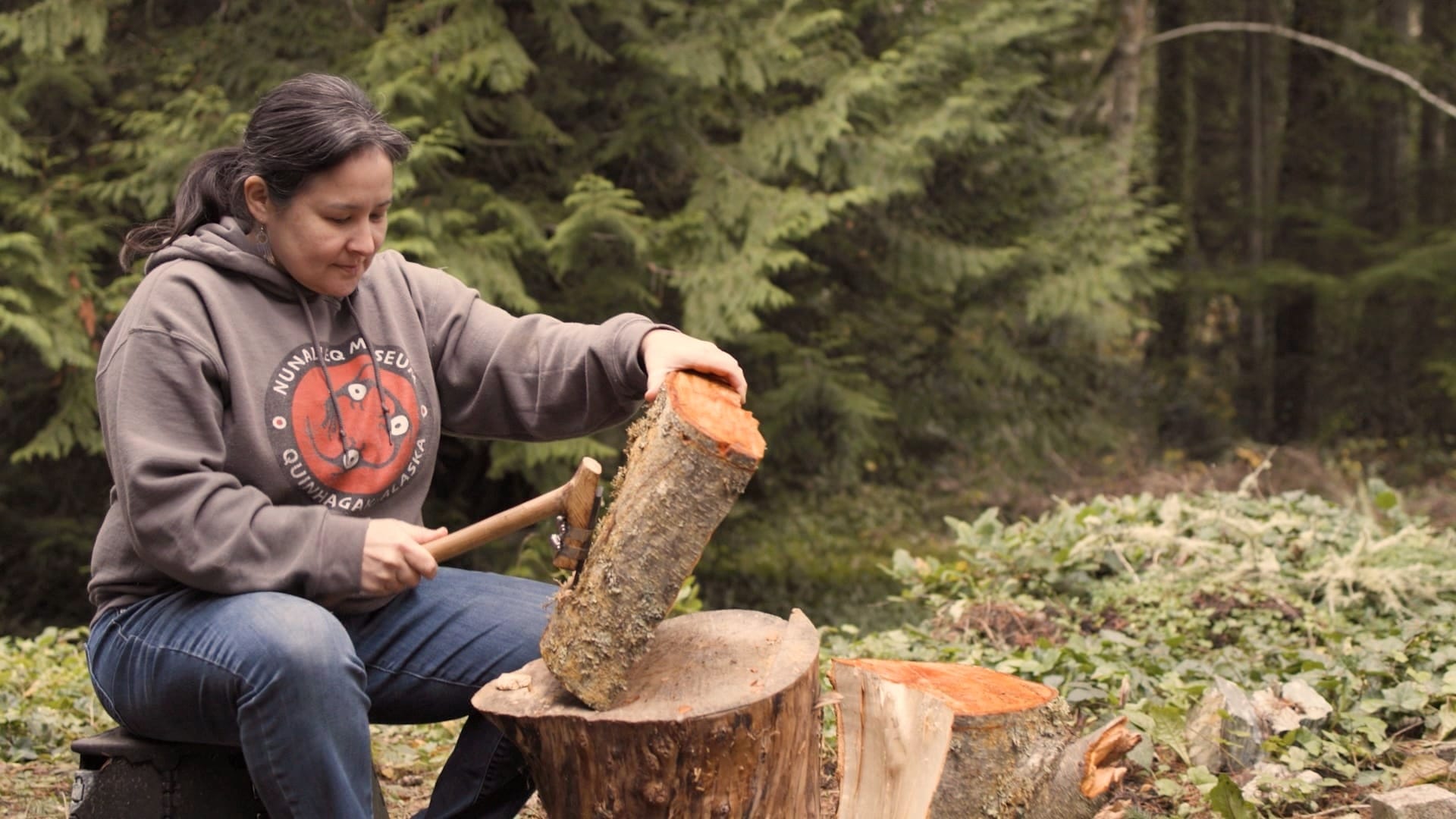
The history of the place where Wood now lives offers an interesting case in point. Indianola sits on the Port Madison Indian Reservation, land designated for the Suquamish people by the Point Elliott Treaty in 1855. But since the early 1900s, when Seattleites started building summer homes along the shores — reachable by the Mosquito Fleet — Indianola’s population has been largely non-Native.
Exactly how Indianola got its name is still disputed, but certainly the name speaks to the prevalence of Indigenous people who have lived in what’s now Kitsap County for generations — including Chief Seattle, whose gravesite is in nearby Suquamish.
Wood settled in Indianola after a lucky happenstance led to an English-teaching job at Chief Kitsap Academy, a high school run by the Suquamish Tribe. She and her husband, a firefighter, liked Kitsap County because it reminded them of Alaska. They bought a house set among tall evergreens just uphill from Indianola’s historic pier, where they’re raising two kids amid walls covered with Wood’s faces.
Harking back to her days teaching Shakespeare, one quote feels almost too on-the-nose for a mask carver: “God hath given you one face, and you make yourselves another.” That’s Hamlet criticizing Ophelia for hiding her true self.
Similarly, Wood’s artful exploration of masks is about encouraging others to remove their own false fronts, and instead embrace their imperfections and asymmetries, their cracks and scars. After all, the word Yup’ik translates to “real people.”
“One of the things I loved about spending time with my grandparents is they were who they were, and they were just genuine and kind,” Wood says. “I really try to live that way as well — being who I am over here, trying to remove that mask as much as I can.”
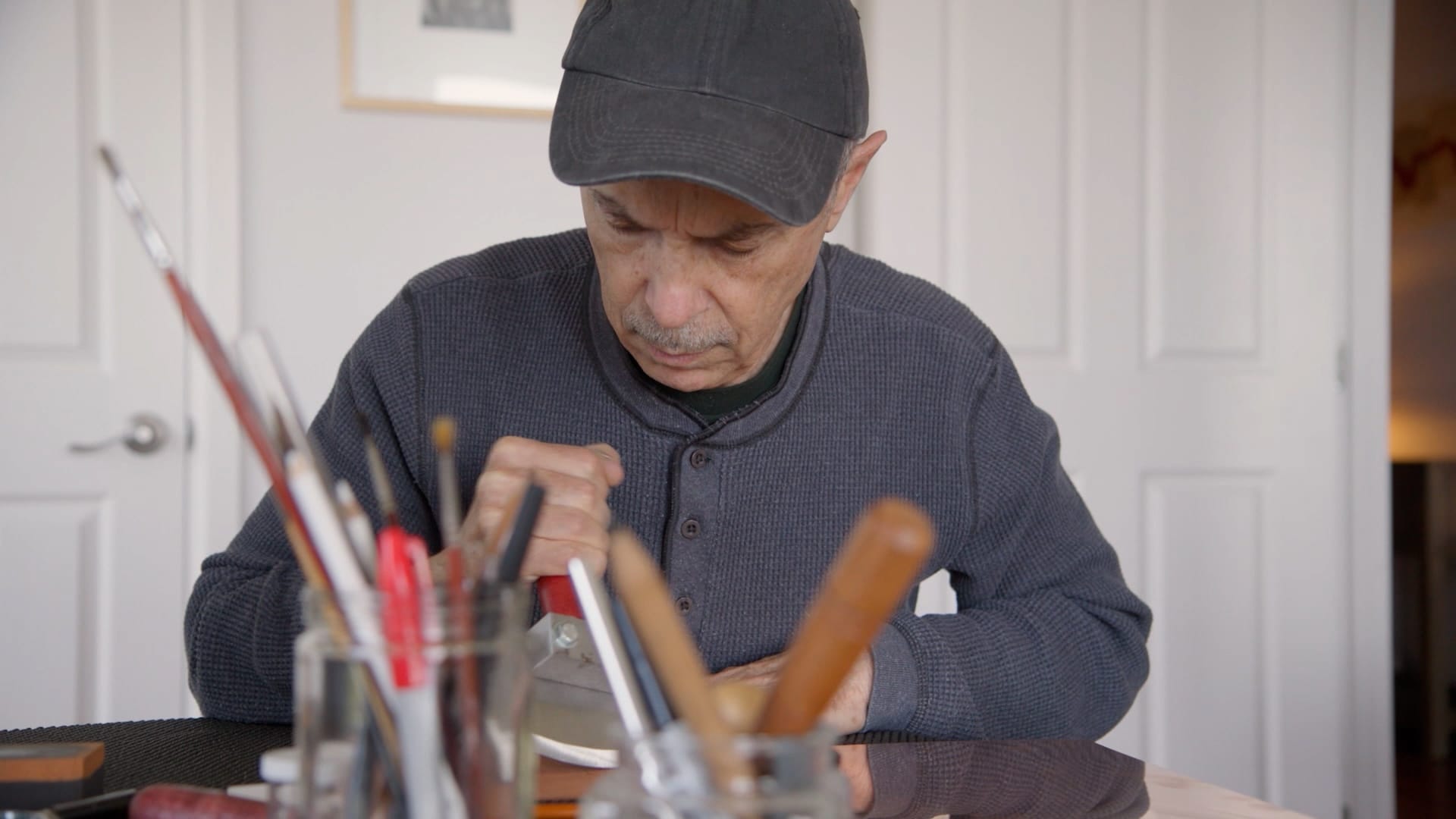
Catch up with the artists featured in the first season of Art by Northwest, and watch for new Season 2 episodes as they roll out in August, September and October, 2025.



